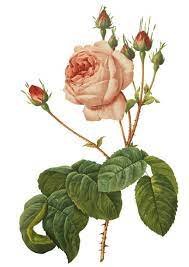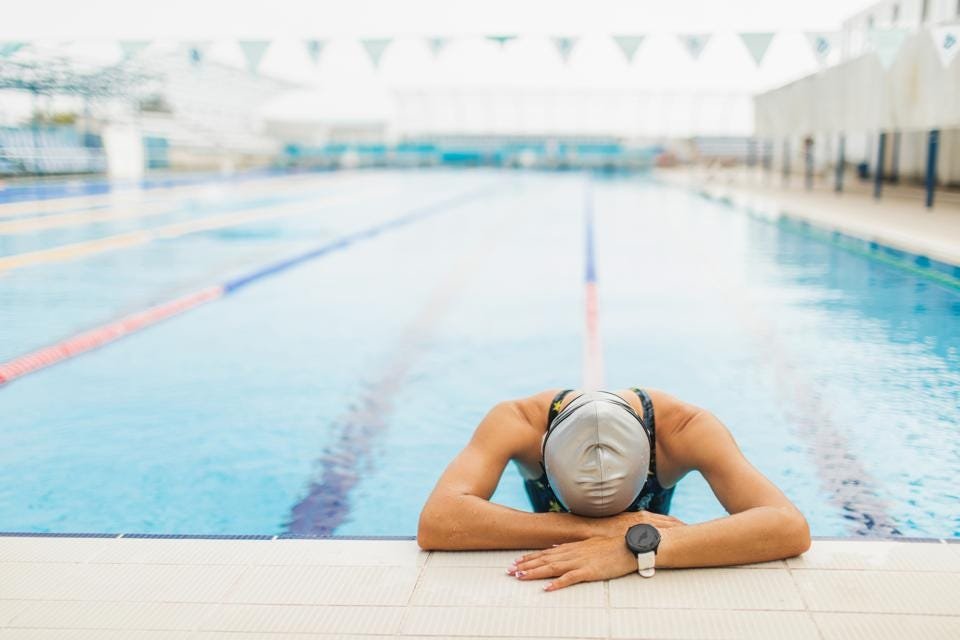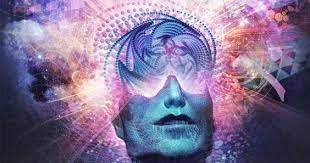Credit: iStock image
If you are someone who grew up playing sports, crushing it every afternoon or in the wee early hours of the morning in the pool, weight room, basketball court (you name it), that environment, that level and type of stress, and that opportunity to work your ass off became second nature to you…it felt like “Home.”
A big problem that a lot of athletes have — from olympians to hard-charging high school varsity players, is finding that level of “home” in their everyday lives once that season of their life is over.
In many ways, I am still attached to the athlete within me — from an identity and from an action perspective (they go hand-in-hand, foot-in-foot). This is not a bad thing — it keeps me active (strokes the heart), creative (strokes the mind), and socially inspired (strokes the spirit).
The issue arises when one has trouble bridging the gap from one phase of life to the next, carrying over the elemental pieces of their prior identity yet letting go of the firmly-shaped person they once were, and weaving one thing that used to bring them ALL THE JOY and they had the freedom to do it ALL THE TIME into the adult life of much more responsibilities and possibilities.
Notice the nuance…polarity…spectrum:
As adults, we are privy to both responsibility and possibility. Much like dark and light, bounds and boundlessness, walls and doors…one cannot exist without the other and — probably more overlooked, each one makes the other one real.
So, first, athlete, allow me to validate the immense joy, pride, sense of accomplishment, heroism, and unstoppable, immortal quality you generated in your competitive athletic past and now in your committed athletic present.
I’m talking to the avid gym goer, 14’er bagger, morning surfer, Pilates junkie, neighborhood grandma walkers (love them). Anyone and everyone who has a passion for exercise.*
I understand your conundrum. The ultimate balancing act — juggling the amount of training that makes you feel fit and equipped for life; your career demands; your relationships; and everything else from spirituality to just having a good ol’ time adventuring.
The visual of the athlete underneath an ever-ripe orange tree comes to mind. Dozens of oranges falling at once, and only two hands to catch them. How many can you really hold onto?
My intent in this post is to have you leave the reading feeling not only capable but inspired to put your very best energy and effort into catching like four or five oranges and making the sweetest orange juice ever with your life rather than stay in a state of overwhelm where you are being pummeled with fruits.
Back to the drawing board: where and how can exercise as an adult athlete fit into your life while prospering fully as a human being?
Great question: I mean, I try not to pay myself on the back too often, but really great question. Because I know I’m not alone in pondering this illusion of a predicament.
Here’s the thing: as an athlete, you know that one of the spheres of your life that you have quite direct control over is your training sessions. So, the issue is not that you are in a bind, trapped, unfree to choose; the issue is if it is choosing you, binding you, making you feel unfree.
From a 10,000 foot view, I’d like to view how exercise can morph through the course of a passionate, habituated athlete’s life from centerpiece, career, core identity to roots, regenerative acts, and resilient relic of your personality in a way you feel happy with.
Let’s begin.
Exercise As An Adult Athlete: The Roses
Credit: Getty Images
It’s a mood-booster. Scientifically and anecdotally, we know that when we move our bodies for long periods of time, we feel happier, more motivated, and less stressed.
It strengthens our brains. From memory, to concentration, to creativity, and beyond. The pump” of a lifting session or a run increases the saturation of molecular targets needed to evolve these cognitive faculties.
It prevents and reverses dis-ease and illness. Dis-ease covers a broad swathe of land. As awesome doc Peter Attia highlights in his teachings, “exercise might be the most powerful drug we have for extending both the quality and perhaps the quantity of our years of life.” He lets us know that The Four Horsemen of Chronic Disease(atherosclerotic disease, cancer, neurodegnerative disease, and insulin resistance) can reduce the risk of ALL of these developments.
It improves sleep. Just like we have a lymphatic system to circulate our blood and keep it clean and well, we have a glymphatic system to flush our brain cells of macroscopic waste. Exercise promotes the deep, restorative phases of sleep where this vital-organ cleansing can do its thang.
It makes you a champ romping in the sheets. Better orgasms, better emotional vulnerability and connectivity, better openness to play and explore. All great stuff.
It attracts healthy people into your life. The energy you create and dilate is the energy people pick up on around you. Whether those people were already working out or just thinking about it, they will be more likely to pick up their feet and the habit, too [yes, this was a community-focused rose]
Exercise As An Adult Athlete: The Thorns
Credit: Getty Images
You become fatigued, not energized. Your training sessions have you slogging throughout the work day, too tired to attend dinner parties, and unable to concentrate on your work. Extreme expressions of this include: chronic fatigue, adrenal fatigue, and burnout).
You become sick, not well. Your immune system can’t keep up with the constant demand of breakdown to build you back up, leaving you more vulnerable to the common cold and more.
You blend with it. You have become “athlete” almost as though you’d wear it on your “My Name Is” sticker. You lose touch with and awareness of the manifold aspects of you and your many interests in life.
Your sex life suffers. You are too tired to make love, fuck, or even cuddle. You are preoccupied with saving that energy for your next PR.
Your social life cowers. You are no longer huddling up with teammates who were your “crew.” Escaping to the gym or mountains ALL THE TIME solo-dolo is a recipe for keeping yourself socially disengaged.
Your brain goes hungry. We need inputs from novel environments and novel challenges to nourish a growth mindset. Sure, you could rally from the gym to the mountain to the dance class…but the topic of conversation…the nucleus = exercise. Doing things with a different center point is vital.
Exercise As An Adult Athlete: The Buds
Credit: lifecoachcode.com
It provides an opportunity for you to learn which physical activities light you up.
You gain a more intimate relationship with your immune system, circadian rhythm, and sleep health.
You cultivate a set of beautiful athletic characteristics (grit, agility, resilience, determination, single-pointed focus, special awareness…the list goes on) that you will carry and apply to everything else in your life.
You meet people who are like-hearted. That is, they share a passion with you and you with them. They love to move.
You grow the fitness and flexibility to explore more of your sexual desires and fantasies. You know, the ones that tend to get more bendy.
You unlock caverns and avenues of your brain that were prior closed/dormant. One aspect of this is your intellectual, cerebral self — conjuring up new questions, curiosities, and conversations. A second aspect of this is your emotional self — noticing and studying things like what triggers you and how you respond to those triggers.
The roses of your exercise as an adult can grow when your exercise is in good balance for you.
The thorns of your exercise as an adult can grow when your exercise is in excess somehow.
The buds of your exercise as an adult can grow when you take notice of the positive potentials of exercising, in your life.
Now, adding one dimension to this mindfulness exercise, what if we 10x’d the roses (benefits) and gave extra loving attention and care to the thorns (risks) and buds (positive potentials) to imagine what a fully-bloomed GARDEN of your exercise as an adult athlete could look like? This is the long-run, viewing the whole forest of your life assessment of how exercise fits into your life.
Here we go.
Exercise As An Adult Athlete: The Garden
Credit: learning-mind.com
It provides just enough stress to boot you up for the day without draining you. Eustress, not distress.
It bolsters your immune system, doesn’t weaken it.
It liberates your sex life, doesn’t shackle it.
It expands your thinking and way of viewing the world, doesn’t shrink it.
It connects you to people you love to be around, doesn’t further isolate you.
It is a feature of you, not the fullness of you.
Finding the Goldilocks amount of exercise you need as an adult athlete can be tricky.
I hope this overview of the perks, threats, positive potentials, and long-term flourishing of the athletic part of you has shown you a way that you can be an athlete for a lifetime and be so much more. How you can practice the identity of “athlete” and still be Human. How you can thrive, prosper, and enjoy Life and all it has to offer in an athletic way.
May you find the peace within to wholly see the very important, shimmering “athlete” scale on the body of your persona, accept and embrace all of its beauty, honor it for protecting you and propelling you to new scapes and heights, and integrate it as a “well-adjusted” adult.
In my follow up to this piece, I will give you a guide and tips to get clear on what your garden looks like as an adult athlete — that is, how exercise can fit into your life as a healing tonic not a poison.
*Funnily, I feel like this is the same as addressing all human beings, because whether we acknowledge it or not, we are wired to be excited, energized, and elevated by movement!





